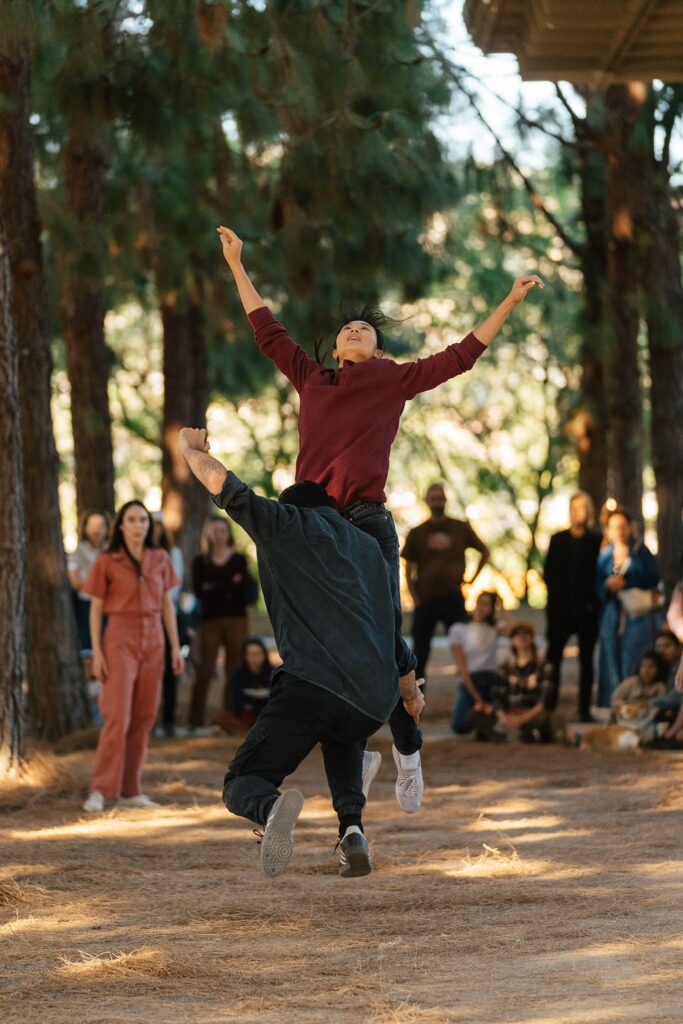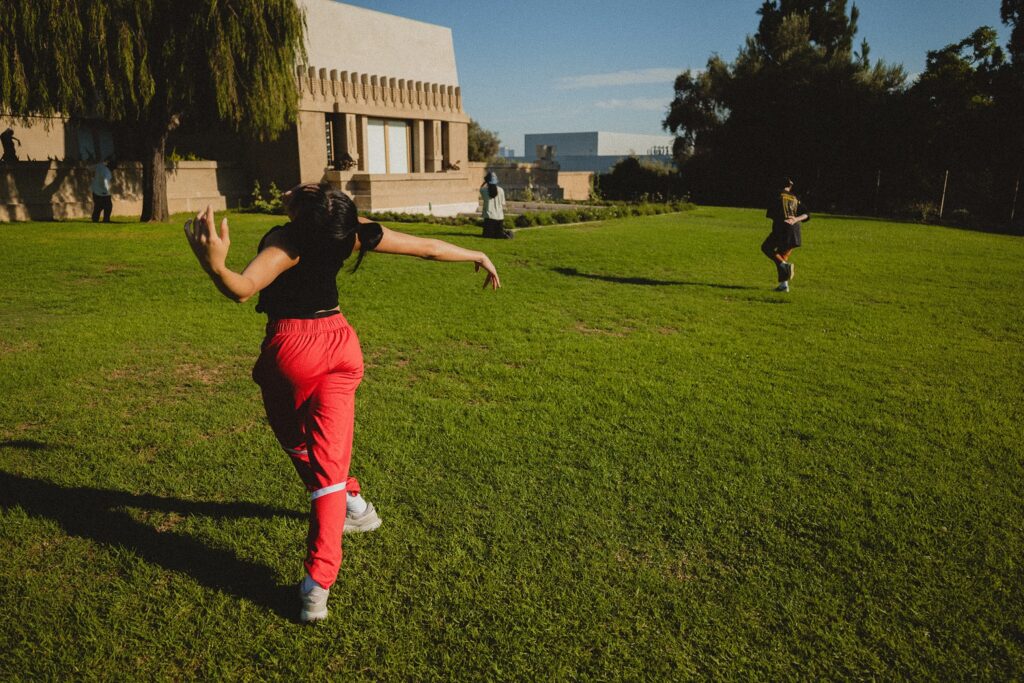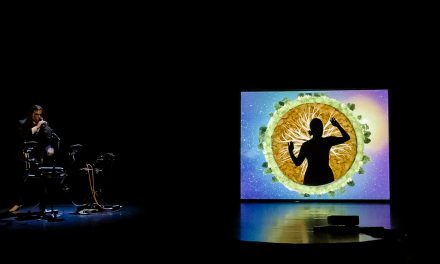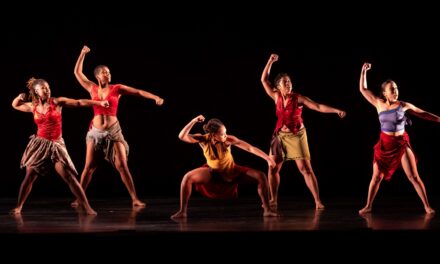Like the wind, the dancing ensemble weave and rush through the trees of Barnsdall Art Park. They found unity with one another and the nature surrounding them, blending into the tall trees and crunching leaves. Without realizing, the audience soon entered the same wavelength.
LA Dance Project’s “Resonance” on November 16 and 17 bridged dance with research on empathy. Presented in collaboration with Getty PST ART: Art & Science Collide, the three-part program — consisting of a dance performance, moderated discussion and community dialogue — put choreographers Francesca Harper, Or Schraiber, Bobbi Jene Smith and Rauf Yasit in conversation with neuroscientist Dr. Jamil Zaki and historian Dr. Vincent Brown to physicalize and practice forms of empathy. The result of the project curated by Jill Johnson was a subtle dance on the Barnsdall Art Park grounds that found a way to unearth a profound reflection.
The performance began before the dancers made themselves known. The event required no sign in. You simply walked to the front of the Hollyhock House where a communal gathering took place. People formed a semi-circle, catching up on a weekend afternoon. The sun warmed the grass, and the wind cooled the skin.
The dancing began with a soft introduction. Company members Jeremy Coachman, Courtney Conovan, Daphne Fernberger, Shu Kinouchi, Audrey Sides and Hope Spears incrementally made themselves known by walking forward to an open patch from behind the audience. They entered with a soft stroll or wave to one another. This proved to be incredibly effective, inviting people into their world — their home.
Fernberger rushes across the grounds, chest towards the sun, stopping at an edge only she can envision. She closes her eyes and allows herself to get lost in the beauties of nature. In another moment, Conovan finds grounding with a tree, connecting to it and inviting other dancers to witness or join. “Resonance” is filled with these internal moments that allows the dancers to get lost in their own introspection. Their vulnerability to do so in front of others is commendable and offers an introduction to empathy.
What “Resonance” does incredibly well in its immersive container is guide people from location to location. The dancers mesmerize and build trust with the audience, so much so that when it came time to usher people from the front of Hollyhock House to the Pine Grove in front of LAMAG, the audience quickly caught on, moving swiftly with the dancers to create a similar circle at the new location. These transitions are just as vital as the performance in building empathy between all the bodies in the space. There’s an immediate respect established in the environment created by the creative team.
The program has an immense sense of joy infused into the movement. Spears and Sides build a connection out of a wave and give each other their weight as they proceed to explore elements of empathy out of the choreography. They latch onto the other’s limbs to push the limits of their movement. The same happens for Kinouchi and Coachman in an alchemic duet. They follow the other’s movements. If one moves the leg, the other repeats the step, finding a way to connect. In the process, they find a balance between peace and urgency, providing each other the opposite approach to balance out the fervor.
The unity within the ensemble is solidified when the group shifts from soft, expansive movement to quick and tight choreography between the trees. As they shuffle forward with gestural choreography, the dirt emanates from the ground, creating a natural fog around their passionate sequence. It is here that the imagery of the performance solidifies. As they shift between the trees, your eyes can get caught in the grooves of the bark when they are out of sight. There’s a connection. It is as if they are carving out their own grooves on the ground, allowing the pattern of the trees to extend from its roots. Everything comes together.
As I’m brought forward alongside other audience members to stand with the trees and survey the choreography from the inside, I look out at the audience and the other dancers who view the dancing trio of Fernberger, Kinouchi and Coachman with us. We’re all taking part in this exploration. Even as dancers transition to a new location of Pine Grove to explore Barnsdall Art Park’s architecture, audience members join along. They mimic the dancers’ movement. One woman stretches her arms with Kinouchi, holding his hands in a strong stance.
“Resonance” is like one big unifying gust of wind. The entire work is a collaborative effort between the four choreographers, six dancers and dozens of audience members. In its mission to create empathy, it does much more. It creates community.
For more information about L.A. Dance Project, please visit their website.
To learn more about Getty PST ART: Art & Science Collide, please visit their website.
Written by Steven Vargas for LA Dance Chronicle.
Featured image: LADP – Shu Kinouchi, Jeremy Coachman in “Resonance” – Photo by Lorrin Brubaker.












